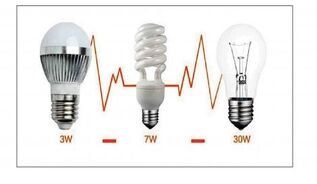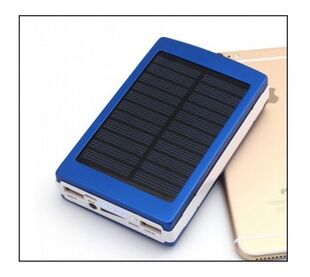Consumers are driven by rising energy prices and environmental considerations to save electricity. Consumers may think the environment is a whim or a scam, but if it comes at an extra cost, it should be reckoned with.
Of course, energy is not going anywhere, its consumption is increasing, the number of resources is increasing, and the most harmful ones are being replaced. Savings are not a restriction but a wise use. You can spend a hundred kilowatts economically and waste a hundred watts.
Saving electricity can be achieved by organizing it rationally (not chaotically), this is the result of design activity. And charlatan tools and the "methods" sometimes advertised on the Internet have nothing to do with thrift. These methods can only cause fire and electric shock.
Decreasing energy consumers
Each electricity consumer can be classified in some way based on the amount of energy consumed (energy intensity). For example, in descending order like this:
- Heating installations;
- Lighting devices;
- Electric motors;
- Computer technology;
- Electronic equipment and communication devices.
This classification is justified even at the household level: electricity is mostly consumed by kettles, different types of stoves - grills, toasters, electric stoves, then irons, dryers. They spend quite a lot of energy on lighting. The lighting competes with the refrigerator (compressor motor).
An ordinary home computer also consumes a lot, quite a competitor to the refrigerator. Against this background, TV, security and fire alarms, and chargers for mobile communication devices consume the least.
The conversion of electricity into heat is the most "noticeable" result that can be achieved, but can also be achieved with full efficiency. if such a conversion is required. The efficiency of iron is almost 100%. In the case of light sources the situation is much worse - even in the case of LED lamps the efficiency is only 15%, .
Savings on heaters
How can we save energy without denying ourselves the benefits of civilization? Because, as you can see, heaters mostly “draw electricity, ” this is the most important resource for saving. For them, energy-saving methods in everyday life are indirect, but no less important. First, the heat must be fully utilized. For example, it is extremely wise to boil water in a metal container in a cold room that does not need to be heated. It is better to do this where the heat spreads through the living quarters.
The generated heat must be stored completely and for as long as possible due to the good thermal insulation of the rooms. In European countries such as Germany, they are fined even for poor insulation.
With multiple tariff energy payments and the ability to store heat, the night mode of water heaters and other heaters is best. During the day, the heat remains at an adequate level. This is especially beneficial when residents work or study during the day. In addition, with night-time energy consumption, consumers balance the load on the electricity grid, which has a positive effect on its operability and operating costs. This allows us to hope for cheaper prices.
Saving on lighting

Let’s start with a reminder to remember to turn off the lights where you don’t need them. And think carefully about the location of light sources (preferably with the help of professionals in this matter) in each room, even if they are rooms of use. We then turn to the light sources that exist in our time.
First of all, it should be noted that we are living in a fertile period, a fertile period of rejecting gluttonous incandescent bulbs that warm up rather than shine. The widespread use of fluorescent light sources (daylight) results in very significant energy savings of two to three times.
Fluorescent lamps made in the form of 40 and 80 W tubes have been prevalent in the past (since the 1970s), but mainly in public and industrial buildings.
Modern, energy-saving household fluorescent lamps in the E27 base are the same tubes that contain mercury vapor and phosphorus on the inner surface of the glass. But they are twisted into a circular spiral and are connected to a miniature electronic ballast located in the base and perform the same functions as the previously performed iron choke and gas discharge starter.
But fluorescents are already being displaced by LED lights, which consume two to three times less energy than fluorescents with the same luminous flux. These are still slightly more expensive than other types of lamps, but the market is not yet saturated with new products. Costs are recouped quickly due to the significant savings that result from their use.
Both fluorescent and LED bulbs have a very wide spectrum and approach daylight. This is due to the fact that in both cases an ultraviolet primary source is used - LED lamps also use luminescence, and ultraviolet light is converted into a mixture of all colors of visible light. In LED lamps alone, ultraviolet light is not generated by mercury vapors but by a semiconductor crystal.
Additional energy-saving methods for solving lighting problems include automating power on and off. Man is forgetful, but technique is not. The use of dimmers (dimmers), photo relays, timers and motion sensors minimizes unnecessary light costs.
All of these are in stores, sold with warranties, certificates, and instructions, and have long been non-exclusive craft occupations available only to skilled radio amateurs who have made them for their homes.
Electric motors
Electric motors in everyday life are found primarily in refrigerators, washing machines and air conditioners. There are pumps for heating systems and also pumps for wells. All other cases: coffee grinders, drills, etc. They do not deserve attention as they are rarely and for a short time turned on.
Reduction of energy consumption in the case of continuous operation of electric motors can be achieved either by stopping them periodically (refrigerators and air conditioners) or by using the frequency converters of asynchronous motors.
These are sometimes used to control the pump motors of water supply and heating systems. Because the operation of electric motors is usually associated with heat (cold), the savings measures are reduced to the fact that there are fewer reasons to turn on the motors: keep doors, vents, refrigerators and freezer doors closed.
The power consumed by electric motors in everyday life is relatively small - about hundreds or even tens of watts, and can ignore the “cosine-phi” value known here because the consumer does not pay for reactive energy.
However, asynchronous motors have one feature: high starting current, 5-7 times higher than rated. This suggests that the less frequently such motors are started, the better, and justifies the use of frequency converters where they are acceptable (this is not the case for refrigerators, especially air conditioners). And don’t put hot dishes in the fridge.
Electric motors used in household appliances can be classified according to power and duty cycle (fraction of time in one duty cycle):
- Refrigerators, air conditioners (150-450 W, 20-50%);
- Heat pumps (60-200 W, 40-100%);
- Kitchen utensils (50-500 W, short term);
- Fans (10-30 W, up to 100%).
Submersible water pumps are used quite infrequently and have significant performance. They are used in the individual houses and cottages of wealthy owners. But even there, economic issues are not in the last place. Therefore, the operation of the pumps in such systems is optimized by hydraulic accumulators, frequency converters and controllers that control the operation of the water supply. Everything happens automatically.
Computers, TV and phone chargers

Gaming computers are able to run counters well not only because of their fast processor, but also because of their powerful video card that works 20 hours a day (game time flies fast and you don’t notice how approaching retirement is approaching as a schoolboy). . . Some people also make money with video cards.
A typical office computer in silent mode is about 200 W, laptop - 40-60 W. This is comparable to a TV and not so significant. Nevertheless, there is no harm in managing the power supply of such devices, especially since such capabilities have long been provided by modern intelligent electronics.
As for chargers for phones and other mobile devices, they can be powered from "alternative" energy sources: solar panels and small wind turbines powered by suitable converters (including, of course, 5, 12 and 20 VDC). The latter can be used to charge laptops. )
Alternative sources are still not widespread in everyday life, their capacity is very modest and their price is high. Still, you need to start somewhere, and tips on saving energy in everyday life need to take this little into account.


























